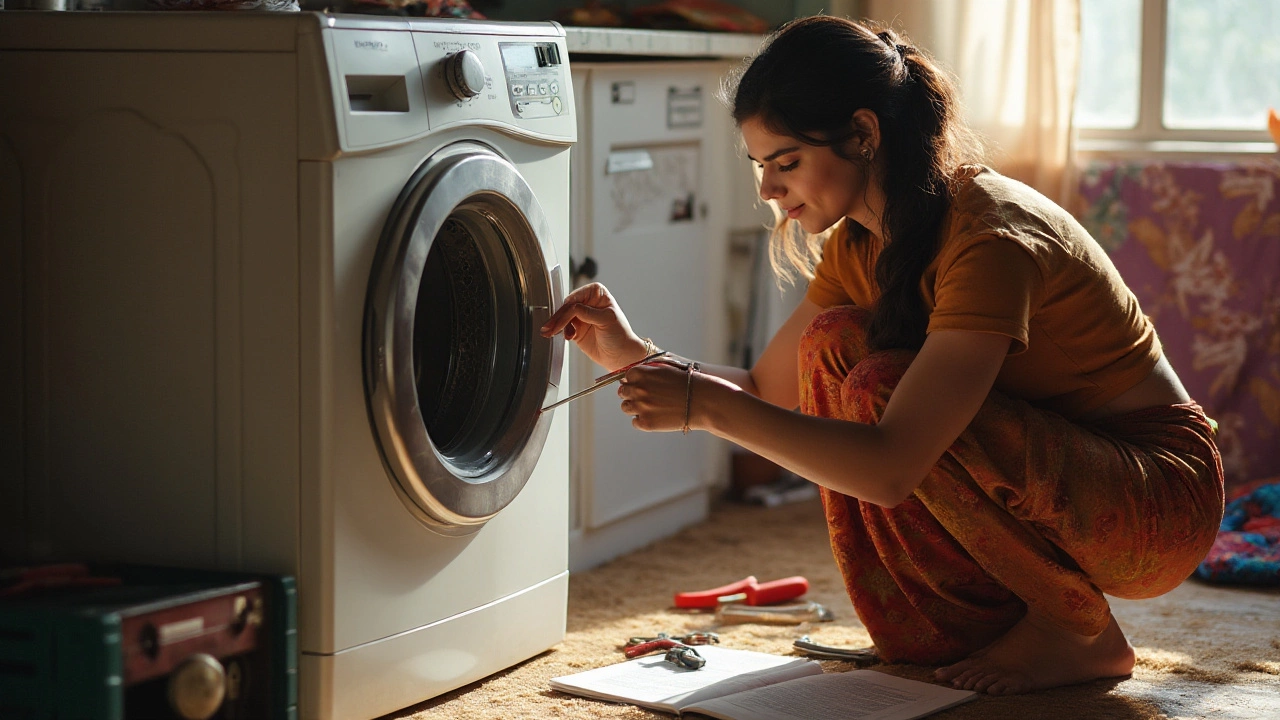Repairing a washing machine on your own might seem daunting, but with some guidance, the task becomes manageable. Learn how to diagnose and fix common issues without calling a professional. This article offers practical advice, insider tips, and essential tools to keep your washing machine running smoothly. Understand the components and familiarize yourself with troubleshooting methods to solve washing machine problems efficiently.
DIY Appliance Repair: Quick Fixes You Can Do at Home
Got a noisy washer, a cold shower, or an oven that won’t heat? You don’t need to panic or call a technician right away. Most common appliance problems have simple checks you can perform with basic tools and a bit of patience. In this guide we’ll walk through the most frequent issues for ovens, washing machines, water heaters, fans and a few other everyday gadgets.
Spot the Symptom, Save the Money
First thing’s first – identify what’s actually wrong. For an oven that won’t heat, look at the bake element, igniter (for gas models) or the thermostat sensor. A flashing code on a washing machine usually points to a door lock issue or a water‑level sensor fault. If your water heater suddenly stops delivering hot water, check the pilot light (gas) or the heating element and thermostat (electric). Write down any error codes, strange noises, or smells before you start tearing anything apart.
Once you have a clear symptom, a quick online search of the model number plus the error code often yields a step‑by‑step reset or test. Many manufacturers provide a “factory reset” button or a power‑cycle method that clears temporary glitches. Doing this first can save you an hour of unnecessary disassembly.
Basic Tools and Safety First
You don’t need a full workshop; a screwdriver set, multimeter, pliers and a flashlight cover most jobs. Always unplug the appliance or shut off the circuit breaker before you start. For gas appliances, turn off the gas supply valve and vent the area. A handful of safety reminders – wear gloves, keep a bucket handy for water, and never force a broken part – will keep you from injuries and further damage.
When testing electrical components, use a multimeter to check continuity. A dead heating element will show infinite resistance, while a good one reads low ohms. For fans, spin the blades by hand; if they feel gritty, the motor bearings likely need cleaning or replacement.
Now let’s tackle a few popular fixes.
Oven not heating: Open the back panel, locate the bake element, and inspect it for visible cracks or breaks. Test it with a multimeter; replace if it reads open circuit. For gas ovens, verify the igniter glows when you turn the oven on. If it’s dim or doesn’t spark, swap it out – they’re cheap and widely available.
Washing machine won’t spin: Check the door latch first – a misaligned latch can stop the spin cycle. Next, examine the drive belt; a broken or loose belt will cause the drum to stay still. If the belt looks fine, test the motor capacitor with a multimeter. A faulty capacitor often leads to erratic spin behavior.
No hot water: For electric heaters, locate the upper and lower heating elements. One often fails before the other. Test each with a multimeter and replace the defective one. If you have a gas heater, ensure the pilot light is lit and the thermocouple isn’t dirty. Cleaning the flame sensor can restore heat in minutes.
Fan stopped working: Remove the grill and clean any dust buildup. Dust can jam the motor or cause overheating. If cleaning doesn’t help, check the motor’s power with a multimeter. A dead motor needs replacement – most fans are designed for easy swap.
While many fixes are straightforward, always know your limits. If a repair involves sealed refrigeration units, complex wiring, or you’re unsure about gas connections, calling a professional is the safest bet.
Remember, the goal of DIY repair is to extend the life of your appliance without breaking the bank. By learning the basics – diagnosing, safety, and simple part swaps – you’ll handle most everyday glitches and only call in a pro for the big stuff.
Got a specific problem that isn’t covered here? Drop a comment or search our tag archive for step‑by‑step guides on everything from extractor fan replacement to water heater diagnostics.
